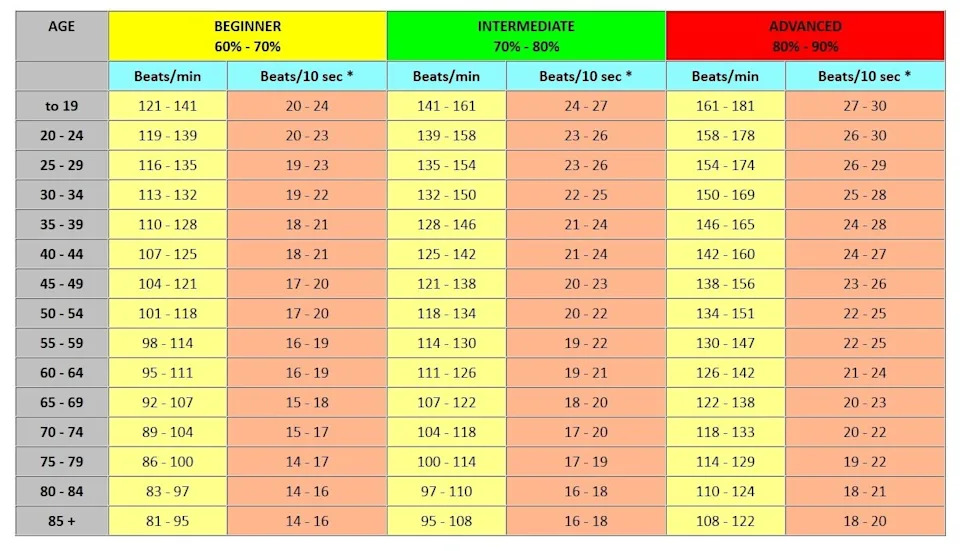Japan has the second highest life expectancy (behind Hong Kong), along with heart disease and obesity rates that are much lower than the global average. Myriad factors impact these statistics spanning genetics and, especially, lifestyle.
One of the first things I noticed in Tokyo was how much everyone walked. I initially chalked their increased activity up to being in an urban environment, but then saw this same pattern repeating itself in less urban areas, with people carrying grocery bags for many blocks and riding their bikes to work.
A new Japanese exercise trend has emerged—and has its roots in well established science. It is shown to reduce the risk of heart disease and improve our moods over time.
Looking into Japanese walking
A study by Dr. Ken-ichi Nemoto of Shinshu University took 60 men and 186 women and split them into three groups.
The second group was instructed to walk at 50% of their peak capacity while using a pedometer to verify they’d gone more than 8000 steps or more per day.
The latter group did a more concentrated session. They were instructed to walk slowly for three minutes at below 40% peak capacity and then walk fast at a brisk pace for three minutes at above 70% capacity, repeating this cycle five times on four days or more each week.
Compared to the no walking and moderate walking groups, this group had noticeable improvements in their strength, endurance, and blood pressure. Their leg strength and flexibility also improved.
The team found that this type of exercise could help prevent age related conditions such as heart disease, high blood pressure, and decreases in thigh muscle strength.
This came to be known as Japanese walking.
How to get started
Japanese walking is a form of anaerobic exercise, which means high intensity for shorter durations.
There are two ways to understand your peak capacity. You can either go by feel, which is entirely fine. Or, you can track your effort as a percentage of your max heart rate. A good way to know your max heart rate (roughly), is to deduct your age from 220. Or, here is a simple chart to use:

You can also wear a heart rate tracking watch. If you are feeling ambitious, the best option is a chest strap heart rate tracker.
Set your timer and try to go for three minutes easy (under 40% max) and three minutes higher intensity (above 70%).
I do a version of this in my local gym three days a week. I set a 20 degree incline on the treadmill, and will walk fast for about one minute, then stop for 20 to 30 seconds to catch my breath. I prefer this method because I get just as high an intensity as jogging, but don’t tear up my knees and back from the impact. Japanese walking isn’t a rigid system. It’s just a matter of challenging yourself every few minutes while keeping a baseline.
What I learned firsthand
In my years as a personal trainer, I learned the value of these styles of periodic sessions. They challenge your heart and circulatory system in a way that steady state exercises can’t. Your muscles can’t sustain that level of intensity for 20 minutes. It’s also miserable trying to do that.
Doing the hard three minutes is what I call, “The Difference Maker”. It is during those minutes that I catch myself checking the time on the treadmill more, and even notice my subconscious coming up with excuses and ideas, like, “Hey, why don’t we stop and stretch. Our back is tight, right? Right!?”
I’ve realized that it is in those moments—that my exercise has truly begun. Beware of that voice during the hard portion of these walks. That means you are doing it.
Doing these sessions compared to just steady state walking on a treadmill and biking yielded different results. The steady intensity still makes me feel better, sweat, and burn more calories.
But the periodic intensity truly gives me the runner’s high, where I feel rejuvenated the rest of the day, and less moody.
The bigger picture
Doctors drew a very strong and clear correlation between vigorous exercise and longer lives, as well as sedentary lifestyles and earlier deaths in a study of the UK population.
So if you care about having more time on this planet, and seeing your children and siblings grow old alongside you, consider taking up Japanese walking. It’s a great entryway into exercise, and challenging yourself, without being completely overwhelming.
At a minimum, try to do as the initial study instructed: five sets of three minutes easy, three minutes hard. You should be breathing heavy during the hard sessions of the three minutes. In total, this portion of the workout is only 30 minutes and completely doable.
If you can easily have a conversation on the phone while doing the hard three minutes, you aren’t doing it hard enough. I call this the no conversation rule.
Lastly, try not to get too caught up in tracking the time. Have a general idea of where the three minutes start and stop, but don’t fall into the trap of watching each second pass. That makes the exercise excruciatingly slow. I try to get lost in my thoughts, or music, to allow myself to go into a flow state. Many smartwatches and phones can also set up timers and intervals to make noises when each section of time is complete. Then, you can just ignore the time completely.
After you do Japanese walking for two weeks, I would encourage you to up the intensity if you can.
One of the most telling experiences I had was visiting my spouse’s grandparents at an assisted living facility. Most of the people in it were well into their 80s and 90s. As I walked down the hall, I noticed that not one of the people in it was significantly overweight. They’d all maintained their weight effectively and had been rewarded with extra years on this planet.
Japanese walking can play a big role in doing the same for you. I encourage you to take it up and hold yourself accountable as you do. Don’t fall into the trap of walking at 30% effort for 20 minutes.
